Updated June10th, 2025
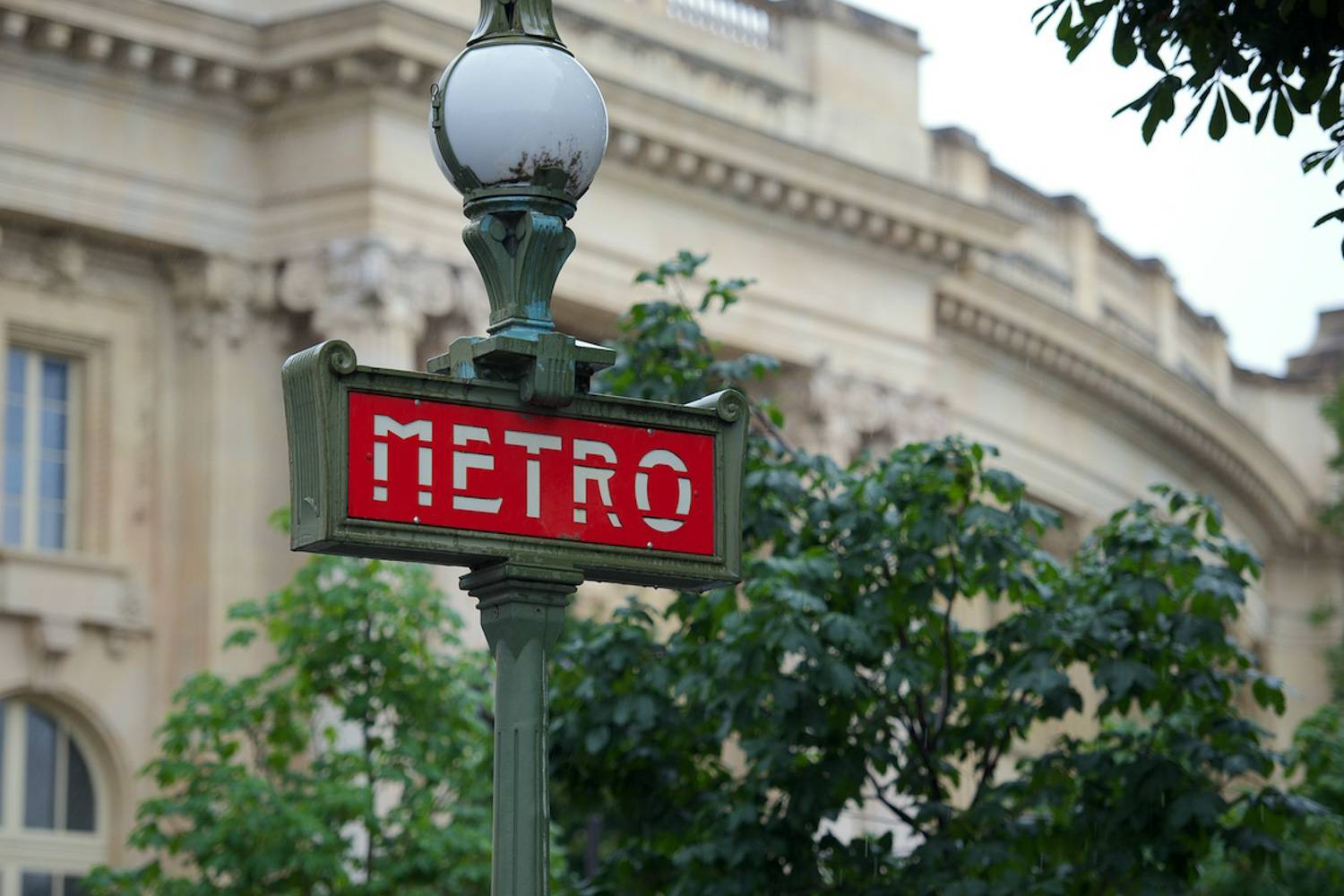
Paris’s Métro system is a work of art that serves the city with pride! (Photo credit: Kevin McGill)
We truly encourage all new travelers or residents of exciting cities like Paris to fully integrate themselves into the culture (i.e. living like a local!). Besides renting an authentic furnished apartment in Paris, there’s one important thing that all visitors to the area must master: getting around the city’s transit system!
Between the comprehensive Métro, a variety of buses and taxis for hire, and the RER commuter rail system, Paris has plenty of options for navigating the city, but understanding an unfamiliar public transportation system can be a bit of an ordeal for new travelers. Fortunately, our guide is here with everything you need to know about your transportation options within the city, plus tips for finding your way and making the most of your experience.
If you’re arriving to Paris from another city or abroad, don’t forget to read about your transportation options into Paris and how to get from your arrival point to your destination in the City of Lights. And of course, if you’re still looking for a destination to call your own, our furnished apartments and vacation rentals in Paris are a great place to start!
Paris Transportation: The Métro
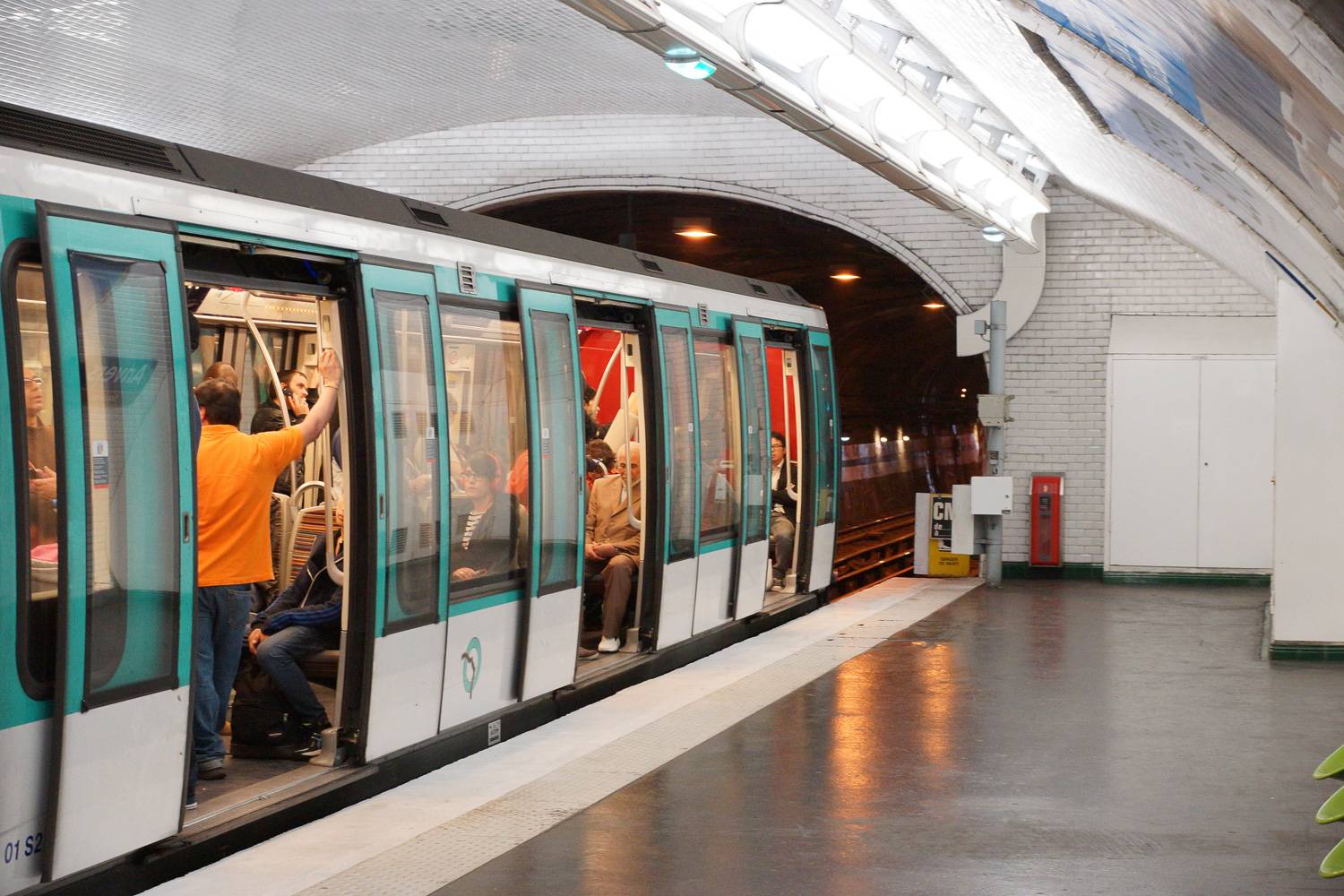
Board a Métro train for one of the most efficient ways to get around the City of Lights. (Photo credit: Chris Sampson)
The Paris Métro (Métropolitain de Paris) is perhaps Paris’s most famous form of public transportation and one of the busiest metro systems in the world. Paris’s Métro is somewhat of a destination in itself, famous for its artistic stations and Art Nouveau-style architecture, and is an icon of the city itself. The Métro is often the fastest and most efficient way to get around within city limits.
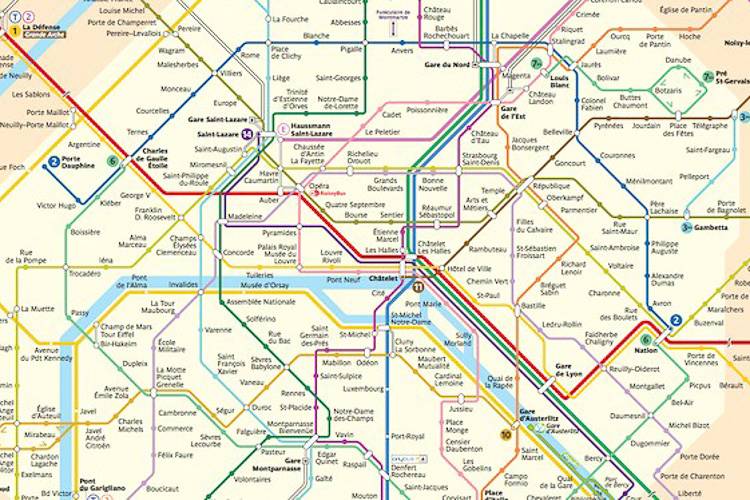
Paris’s 16 metro lines are all designated by a unique number and color.
The metro system in Paris consists of 16 lines that are all separately designated by a different color and number. Unlike the subway system in New York City, each color is distinct to its particular line, which can make navigating the trains a bit easier from a visual standpoint if you’re not a French speaker.
You can tell which direction a Paris Métro train is heading in by looking at the two station names listed on signs and displays—these represent the first and last stops on the line. The second name indicates the direction of travel. For example, if a Line 1 train is announced as ‘La Défense – Château de Vincennes’, it is heading southeast from La Défense toward the terminal stop at Château de Vincennes.
For easier navigation, especially if you’re unfamiliar with the system or don’t speak French, consider downloading mobile apps like Bonjour RATP or Citymapper. These tools provide real-time directions, platform information, and service alerts in English, helping you navigate the system with greater confidence and ease.
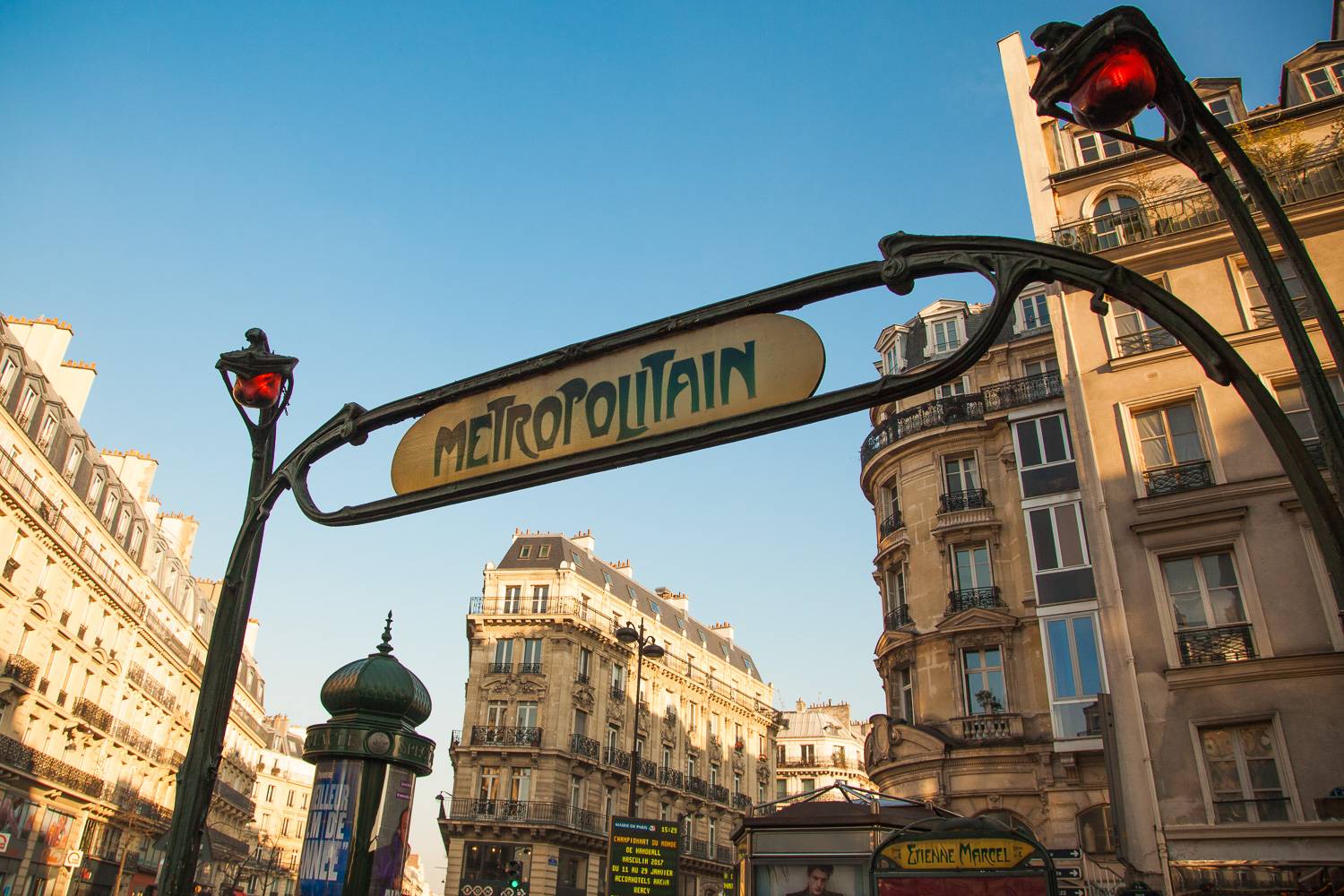
One of the types of signs marking the entrance to the Métro that you may see in Paris are these dramatic green and yellow arches. (Photo credit: Bradley Weber)
Entrances to the Métro from the street are marked by three main sign styles. You may see a classic cast-iron sign with red-and-white lettering that says “METRO” (see the top photo in this article!), a green iron archway with a yellow sign reading “METROPOLITAIN,” or a simple, round sign with a large yellow M.
While accessibility remains limited in many Paris Métro stations due to their historic design and prevalence of stairs, the city has made progress in improving the system. For travelers with mobility needs, several key improvements include:
- Gradual installation of elevators at major hubs and interchange station
- Enhanced visual and audio announcements for hearing and visually impaired travelers
- Newer trains on lines 1, 5 and 14 which now feature air-conditioned cars, providing relief during increasingly warm summer months.
Despite these improvements, those requiring full accessibility should consider using the bus network – all buses are wheelchair accessible – or research their routes carefully before travel. The official RATP app now indicates which stations have elevator access.
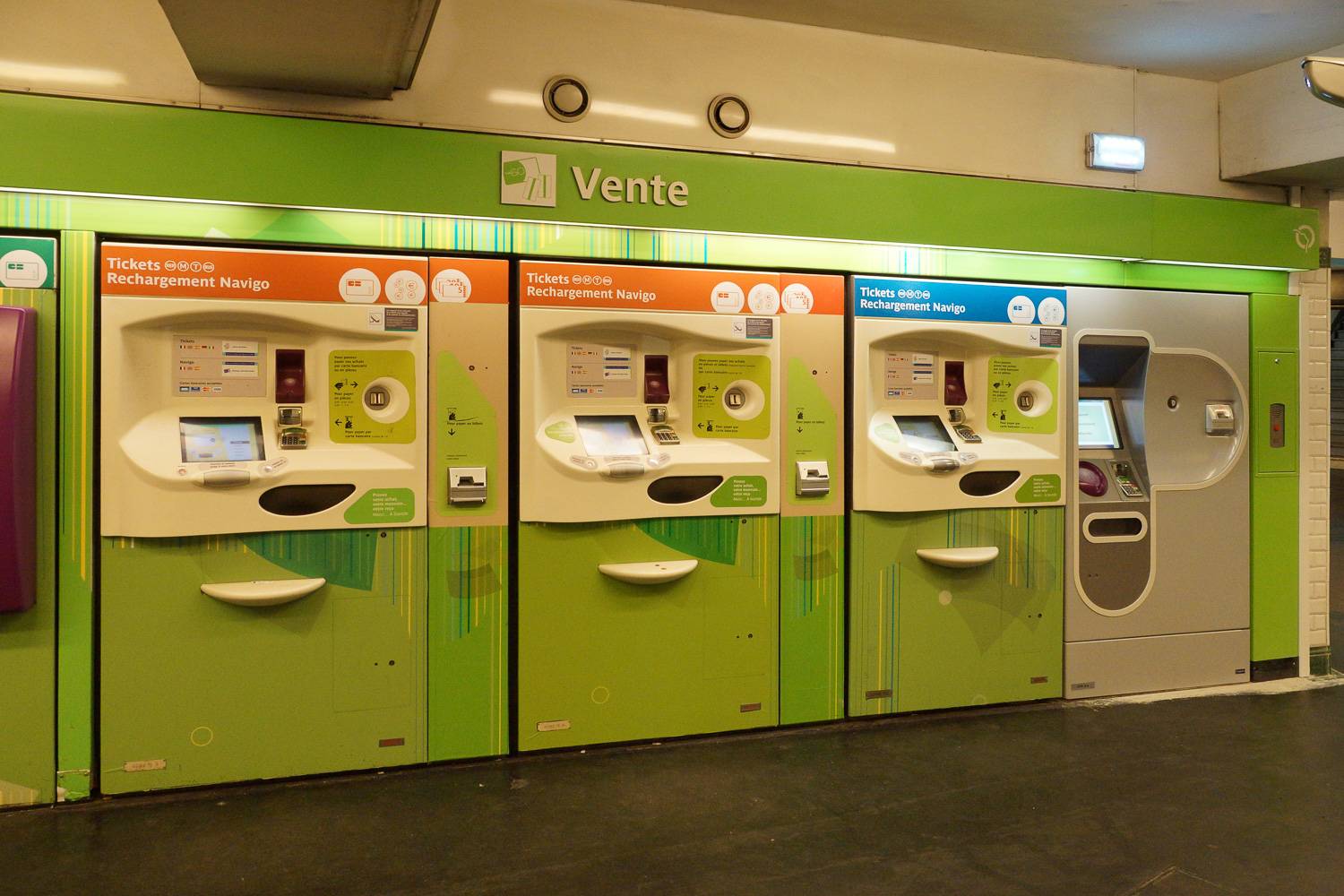
You can buy Métro tickets at designated machines in any Paris metro station. (Photo credit: Chris Sampson)
The Métro system is ticketed, but tickets and travel passes are readily available for purchase throughout Paris. In addition to ticket machines in all metro and RER stations, Métro tickets can be purchased from Paris tourism information centers and some newsstands. Make sure to only purchase tickets for the metro from machines or official licensed vendors. People selling Métro tickets on the street often prey on unsuspecting tourists by selling them counterfeit passes, and if your ticket turns out to be fake, there’s no way to get your money back!
You have a number of options when buying Métro passes, designed to be most suitable for different needs and trip durations:
- Digital t+ tickets: As of January 2025, Paris has completed its transition to paperless ticketing across most of the network. Paper t+ tickets have been phased out in favor of digital alternatives, though existing paper tickets remain valid until December 31st, 2025.
For travelers, this modernization offers several convenient options:
· Navigo Easy card: The recommended option for tourists, this reloadable card costs €2 and can be purchased at any station ticket machine or counter. Simply tap to load your digital t+ tickets.
· Smartphone ticketing: Purchase tickets via the RATP app or text message service for immediate use.
· Contactless payment: Many stations now accept direct tap-and-go payments with compatible credit/debit cards.
These digital tickets provide the same access as traditional t+ tickets:
· All Métro lines (except the Orly Airport segment of line 14)
· RER trains within Zone 1 (central Paris)
· Buses and trams (excluding express line and trams T11-T14)
· Montmartre funicular
The transfer window remains 90 minutes between eligible services, allowing you to complete most journeys on a single ticket. - Navigo pass (Carte Navigo): A Navigo pass is a prepaid weekly or monthly travel pass that allows you unlimited travel on public transport in Paris. Passes vary in price based on the zones that they cover. Zone 1 covers all of the central Paris metropolitan area, while Zones 2-5 cover the surrounding suburbs. Navigo passes are available in “all-zone” or “two-zone” styles.
- Paris Visite pass: This pass is a special offer that is particularly beneficial to tourists and vacationers. The pass offers unlimited travel in Paris and greater Paris, including to popular destinations like Versailles and Disneyland Paris. The passes also include special offers from partners, including popular Paris attractions and museums. The passes are valid for 1, 2, 3, or 5 consecutive days (depending on the plan you purchase).
Before you can decide what ticket is right for you, it’s important to understand how to travel around Greater Paris on the city’s express commuter rail. This, of course, is the RER.
Paris Transportation: The RER
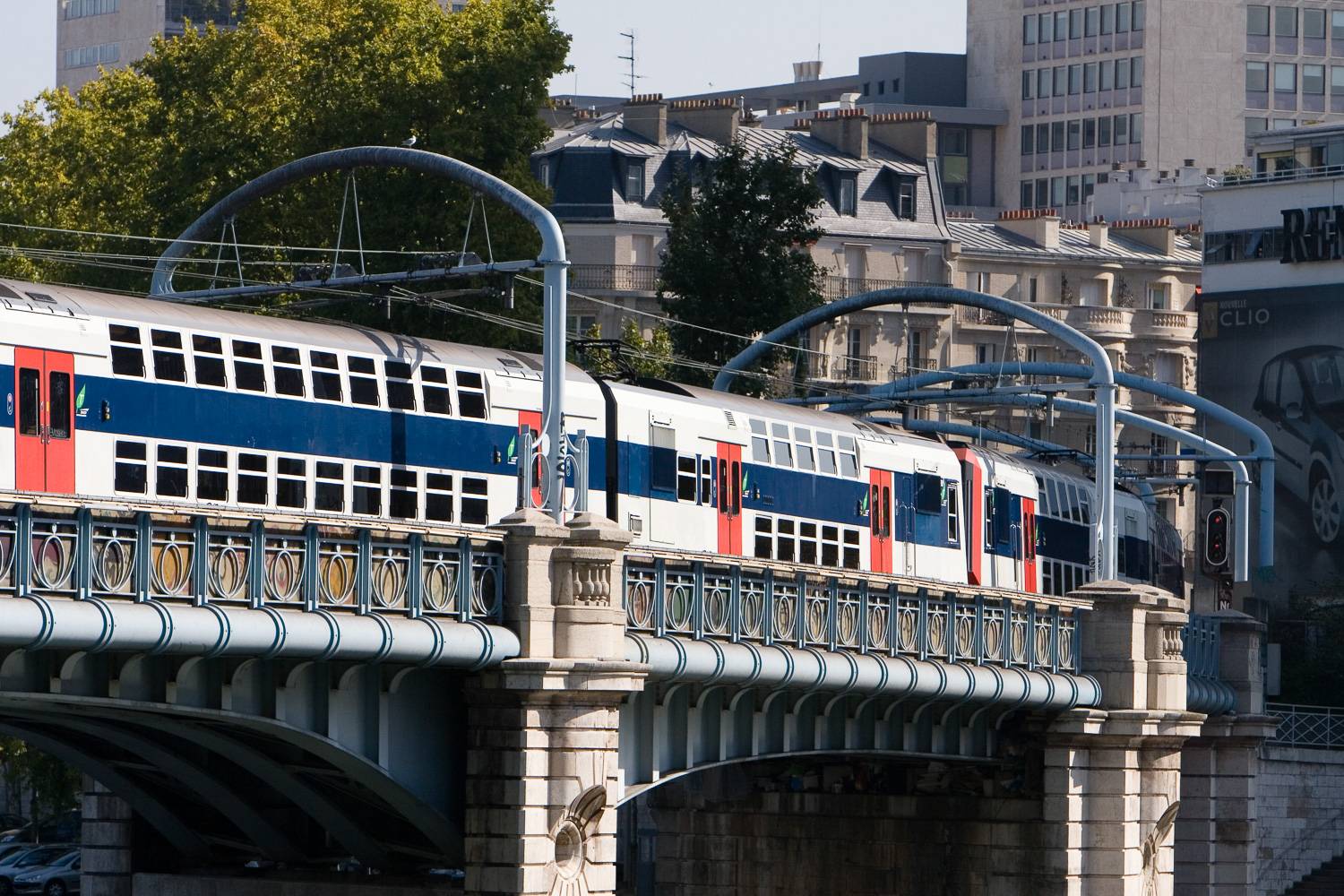
The RER express trains are a quick and easy way to get around Paris and connect with destinations in the suburbs! (Photo credit: Frédéric de Villamil)
The RER (Réseau Express Régional) is a train system that serves Paris and its outer suburbs. Within Paris’s city limits, the RER is somewhat like the Métro (runs underground and serves some of the city’s largest travel hubs), but it is a much faster option with fewer stops. It’s an especially quick option for those living outside of the center of Paris.
The RER consists of five lines (A–E) connecting central Paris with the greater Île-de-France region. Trains typically operate from around 5:30 a.m. to 1:30 a.m., depending on the line and the day of the week. For early morning or late-night travel, check the RATP app (https://www.ratp.fr/en/ratp-apps) for real-time schedules and any service changes, as operating hours may vary by line and day of the week.
Major hubs for the RER include Châtelet- Les Halles, St. Michel/Notre Dame, Gare du Nord, and Gare de Lyon. Because transport on the RER makes getting to the outer suburbs simple, it’s a popular option for travelers coming from the city’s two major airports. For more information about transportation to and from Paris airports, read our guide! The system is also your best bet for traveling to attractions outside of Paris, like the Palace of Versailles and Disneyland Paris.
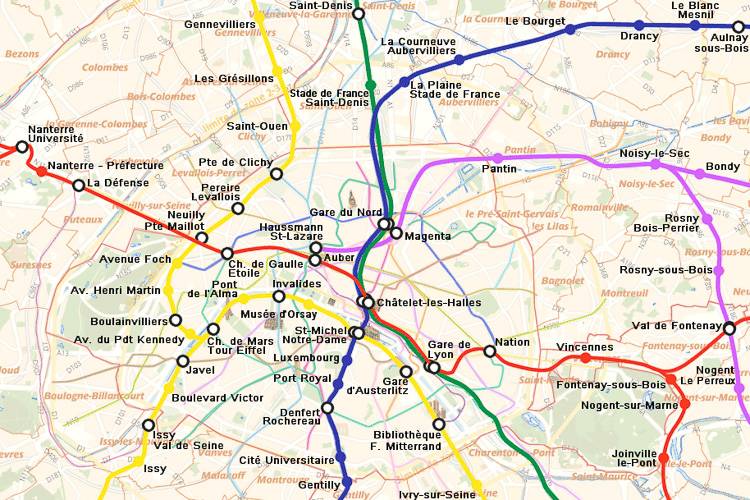
The RER’s five lines connect you with areas outside of Paris’s center
Within the city (zones 1 and 2), you can use the above ticket options (t+, Navigo, or Paris Visite) without any issues. However, if you’re traveling to other zones in the suburbs, a t+ ticket is not valid. You’ll need to buy a special point-to-point RER ticket from a clerk or a ticket machine in an RER station. Additionally, if you’re traveling to a zone not included on your Navigo or Paris Visite pass, you’ll need to pay a supplemental upgrade.
Paris Transportation: RATP buses
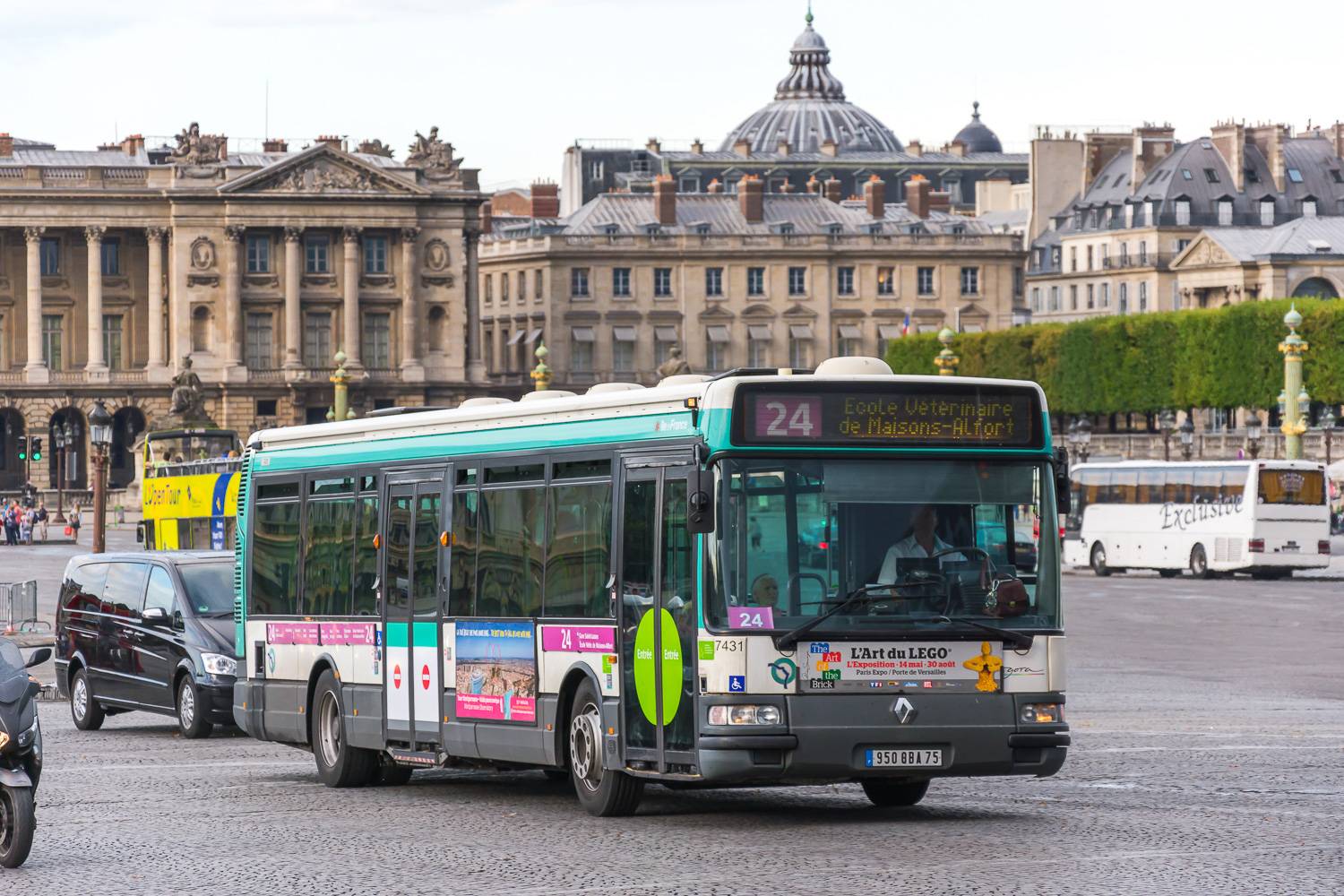
Take a tour of Paris while traveling from point A to point B by riding the city’s RATP buses.
Paris’s RATP bus network covers all of the city of Paris and most of its suburban areas. Though it’s not as fast as taking the Métro or train, the bus can be a great way to sightsee while you travel from point A to B!
With over 350 regular bus lines (including 65 within central Paris), the RATP bus network offers comprehensive coverage of the city and surrounding areas. The bus system has undergone significant modernization in recent years, with features that enhance the travel experience:
- Real-time digital displays at most stops showing accurate arrival times
- GPS-tracked buses visible on the RATP app
- 100% wheelchair accessible fleet
- Dedicated bus lanes throughout the city for faster travel
- Increasingly eco-friendly vehicles, with many electric buses now in service
For visitors, buses provide a scenic alternative to underground Métro, particularly along routes passing major landmarks. Look for routes 42, 69 and 72 for some of the best sightseeing opportunities while commuting.
You can board a bus using any Paris travel pass, including a t+ ticket. Additionally, each ticket allows you a transfer to another bus line within 90 minutes of validation.
On average, buses run from 5:00 a.m. to 12:00 a.m., but if you’re looking to stay out late in Paris, you can use the Noctilien bus service, which runs all night.
Paris Transportation: Taxis, bicycles, and more
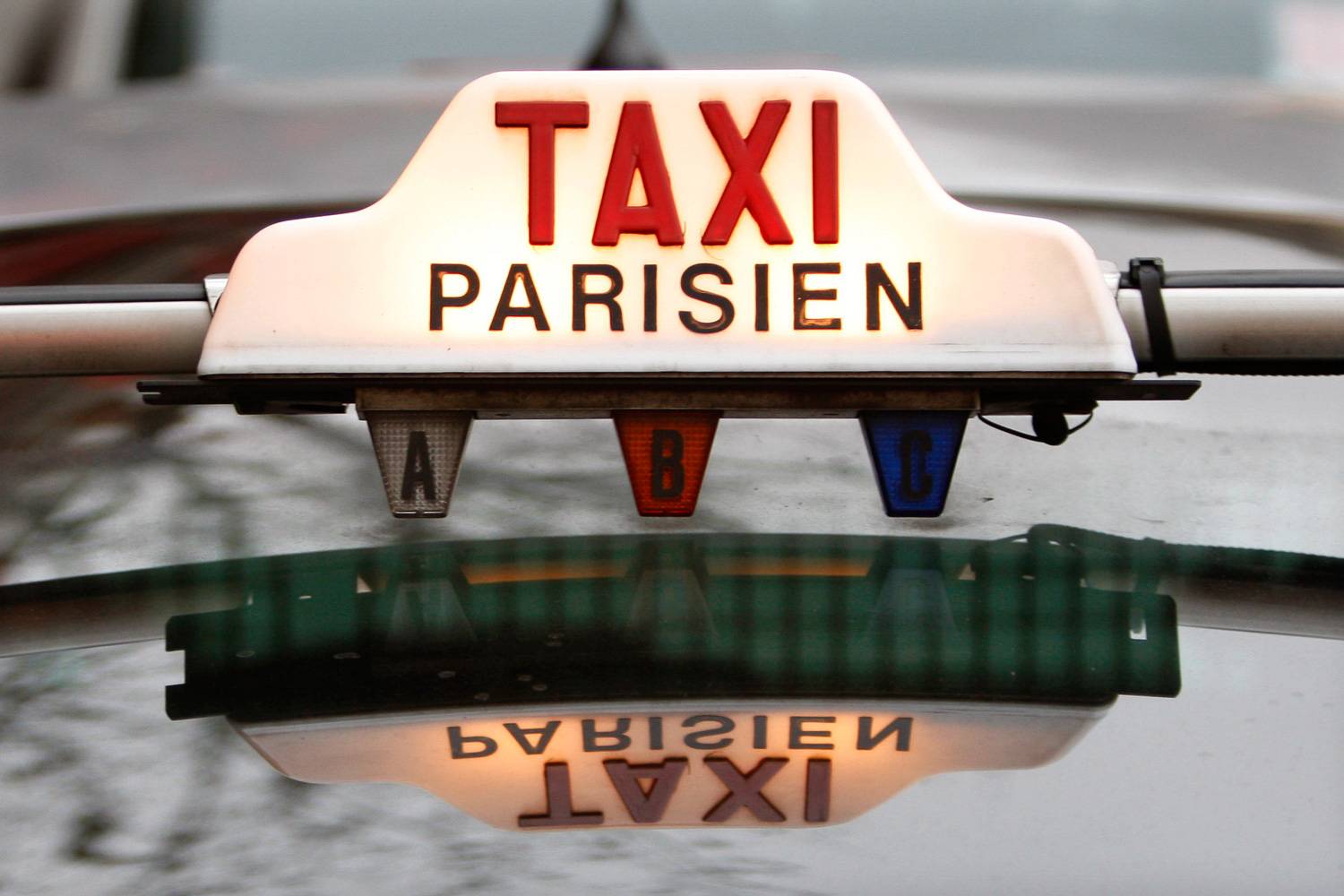
You will see this sign on the roofs of all official, licensed taxis in the city of Paris. (Photo credit: Charles Platiau for Reuters)
There’s no need to fear public transportation in Paris, but if you prefer a more direct route to your destination, you can always take a taxi! Taxis incur a metered fare, and a 10% gratuity is expected for the driver. It’s also best to be prepared with cash, especially for a shorter trip.
With around 18,000 licensed taxis operating throughout Paris, traditional street hailing remains common. However, the taxi experience has modernized significantly with dedicated apps that enhance convenience and security:
- G7 Taxi: Paris’ largest official taxi service offers an English-language app with upfront pricing, driver tracking, and simplified payment options.
- Taxi Paris: the official Paris taxi app connects you directly with licensed drivers.
- Free Now: Another reputable option operating throughout the city.
These apps provide peace of mind, particularly for visitors unfamiliar with the city or who don’t speak French. When hailing a taxi, always verify it displays the illuminated “TAXI PARISIEN” roof sign and has a meter visible inside. Licensed taxis accept credit cards, though having some cash is recommended for shorter journeys.
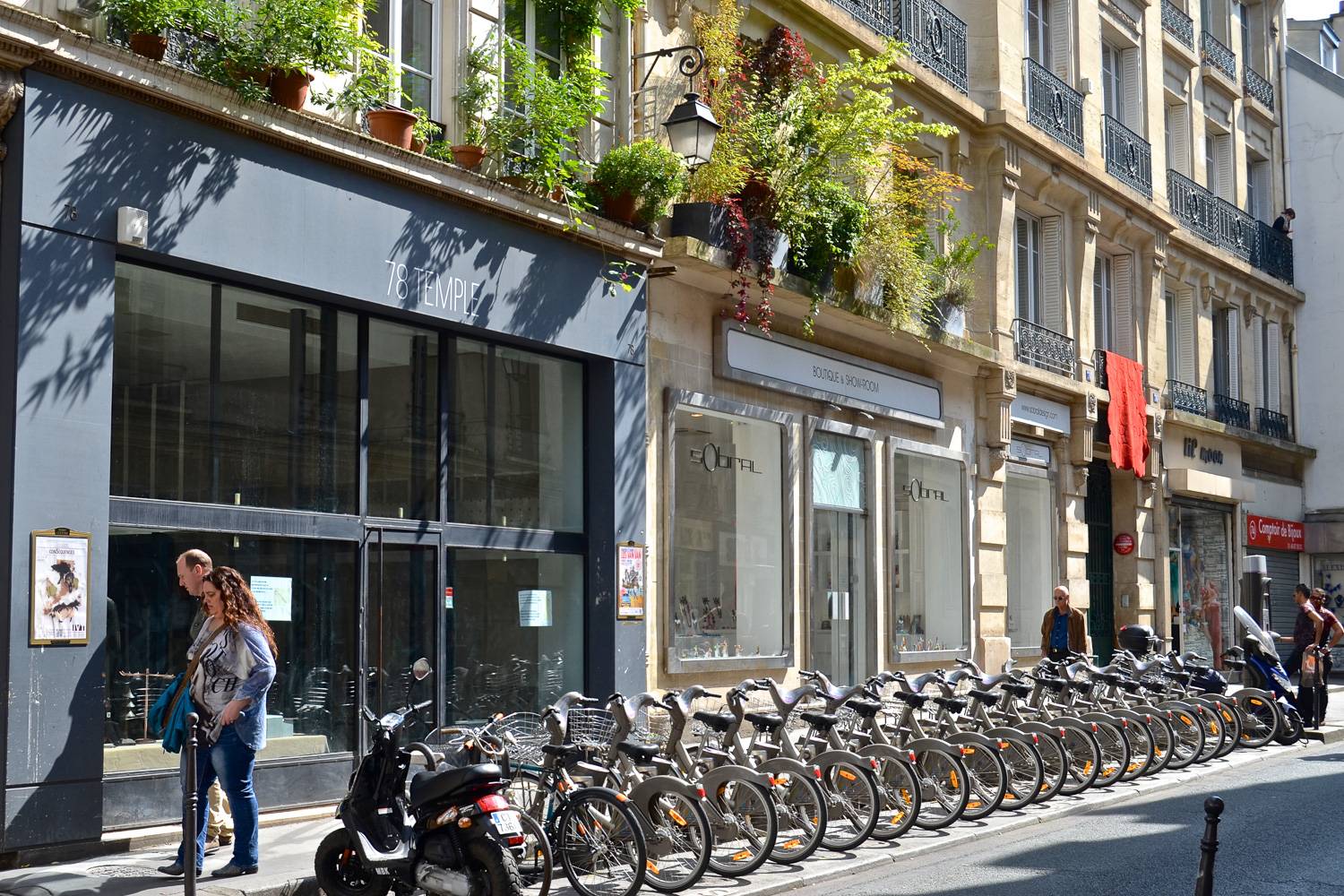
Get out and about in Paris by renting a bike at one of the city’s many sharing stations. (Photo credit: David McSpadden)
What’s a great and cheap way to get around, see the city, and exercise at the same time? Riding a bicycle, of course!
The Vélib’ Métropole bike-sharing system has evolved into one of Europe’s most extensive networks, with over 1,400 stations and 20,000 bicycles available throughout Paris and neighboring communities. The current system offers two types of bicycles:
- Traditional bicycles (green): Perfect for short trips like those in a Paris vacation rental.
- Electric-assist bicycles (blue): Offering a powered boost up to 25 km/h, ideal for longer commutes, perfect for tenants in furnished apartments.
The Vélib’ app provides real-time information on bicycle availability and station locations. Note that rentals require a chip-enabled payment card or NFC-enabled smartphone. For safety, consider bringing your own helmet, as they aren’t provided with rentals.
Paris public transportation and furnished rentals: A perfect pair

Stay connected by metro in a roomy, homey furnished apartment in Paris! (PA-4704)
It’s not just mastering Paris’s public transit that will make your trip as enjoyable and efficient as possible. One of the best ways to experience the city is from the perspective of a local by renting a furnished apartment! Choosing an apartment over a hotel offers a myriad of benefits, from reduced costs, to contact with an apartment owner who is often a Paris local and can offer tips on what to see and do, to the comforts of home (linens, extensive furniture and art, and a full kitchen!), to perhaps the most important to this article: natural proximity to public transportation! Here are just a few choices with easy access to metro stations:
- A 1-bedroom furnished rental on Île Saint-Louis, near Notre dame and the Sully-Morland metro station (line 7) Station (line 6)
- A 2-bedroom furnished rental in Saint-Germain des Prés, close to Sèvres-Babylone station (line 10 and 12)
- A 2-bedroom furnished apartment rental in Invalides, just a street away from Varenne Station, serving line 13
- A 1-bedroom furnished apartment rental near the Arc de Triomphe just blocks from the Champs-Élysées and Kléber Station (line 6)
All of our Paris listings come with a full description detailing the most convenient metro lines, and our licensed agents can easily help you find an apartment conducive to the public transportation of your choice. To get in touch, submit a request through our website!
Tips for hassle-free Paris transportation

Having a map on hand is a smart idea while you’re still getting used to the Métro.
As a bonus, here are a few extra tips from our agency for the best transportation experience possible (for you and your new Parisian neighbors!):
As you explore the City of Light, these insider tips will help you navigate like a local:
- Digital first: Download the RATP and Citymapper apps before your trip – they offer real-time updates, route planning and English-language support
- Validate always: Even with digital tickets, always validate at the entry gates or on-board validators
- Board with care: Let passengers exit before boarding trains and buses
- Travel light: Remove backpacks when boarding crowded trains and place them at your feet
- Stay alert: As in any major city, be mindful of your belongings, especially in crowded stations
- Walk when possible: Paris is a wonderfully walkable city, with many attractions closer together than they seem on maps
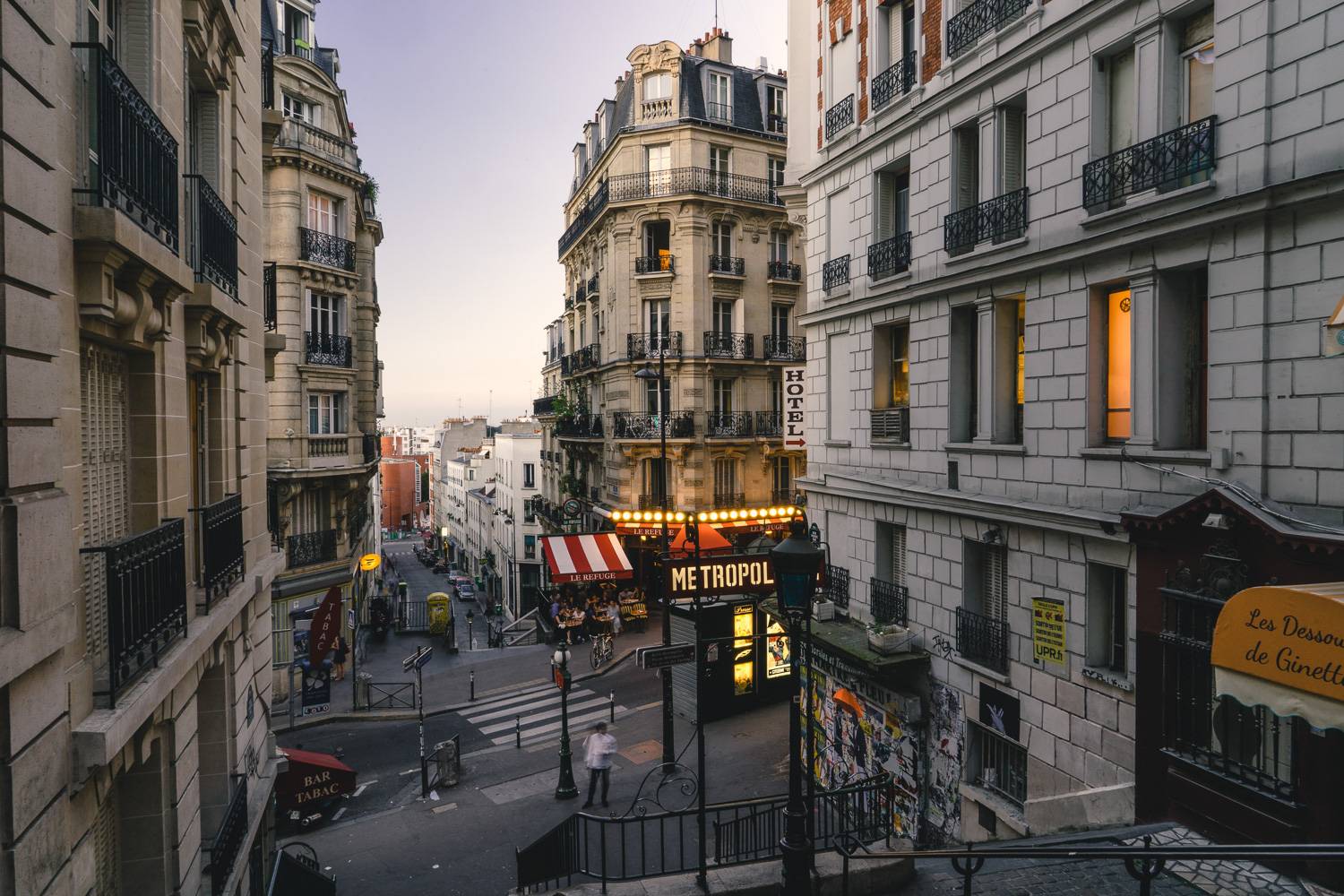
You never know what surprises you may find while walking the streets of Paris! (Photo credit: John Towner via Unsplash)
You can find more etiquette tips for Paris transportation in our blog, but always remember this: While the public transportation is great, sometimes the best way to get around Paris, and truly understand Paris, is on foot! Don’t be afraid to wander the streets from time to time, especially if your destination isn’t too far away. No matter how you choose to travel, enjoy your time exploring the City of Lights!

Planning a trip to Paris? Here’s your quick guide to getting around the City of Light (Photo credit: Kedar Gadge / Unsplash)
.

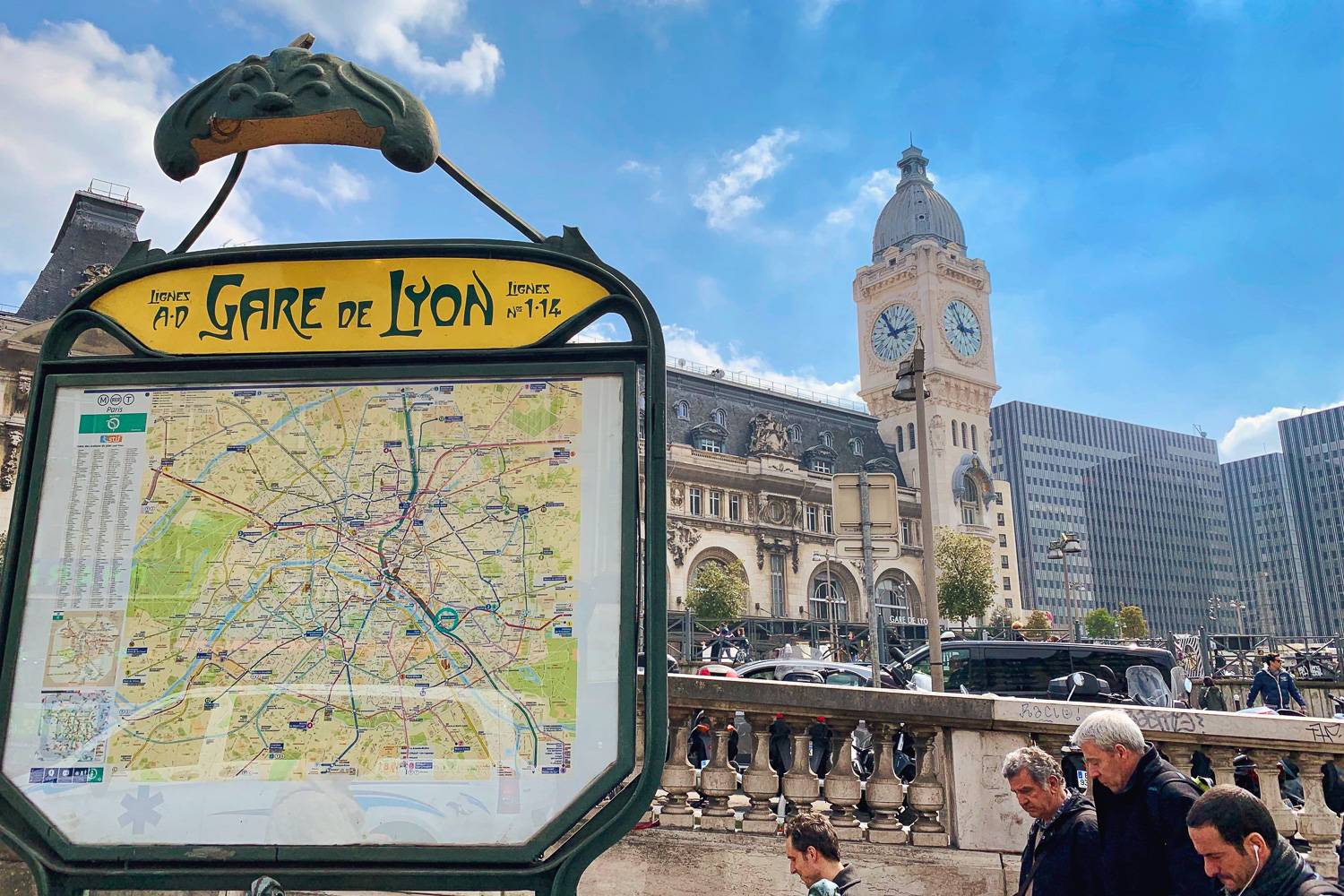



Leave a Reply